Black Cats in Art for Spooky Season
The enigmatic black cat, shrouded in mystery and often associated with magic and witchcraft, has a prominent role in the realm of art. Let’s...
Andreea Iancu 9 November 2023
We’ve all seen those jovial, happy cat figurines in Asian restaurants and shops. Sitting upright with their raised paw, smiling face, and trademark bell and bib, Maneki Neko (in Japanese 招き猫, “beckoning cat”) have symbolized all kinds of luck and good fortune for over 400 years. Their slightly mysterious origins just add to their mystique and charm.
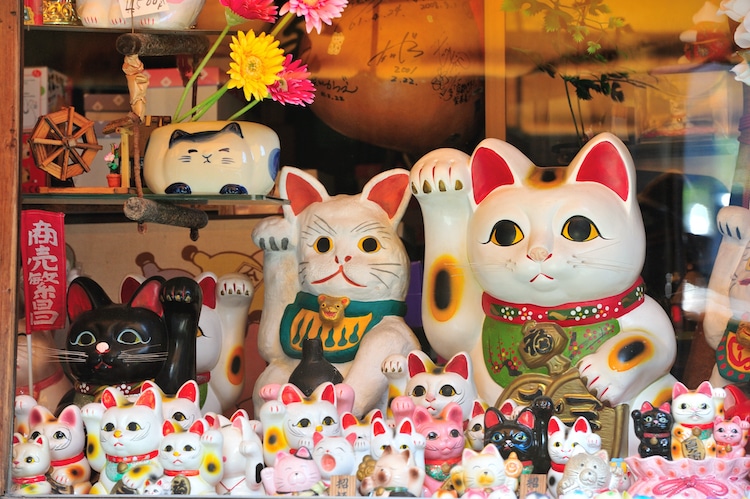
These feisty little creatures originated in Japan’s Edo Period (1615-1868). This was a time of great prosperity in Japan. Cats were a symbol of the growing and wealthy merchant class and higher society. There is no agreement on the story of their origin. However, the stories always involve a cat saving a priest or a merchant’s life or livelihood, bringing them great prosperity and rewards with their charm.
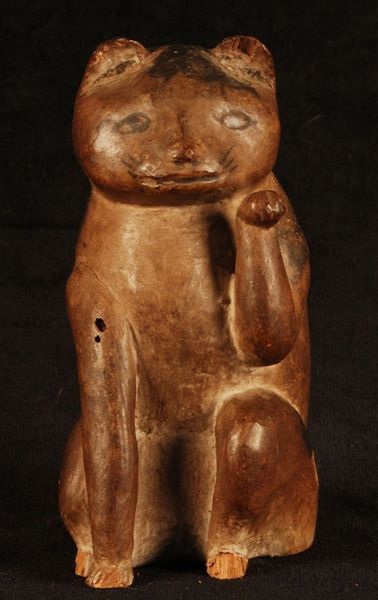


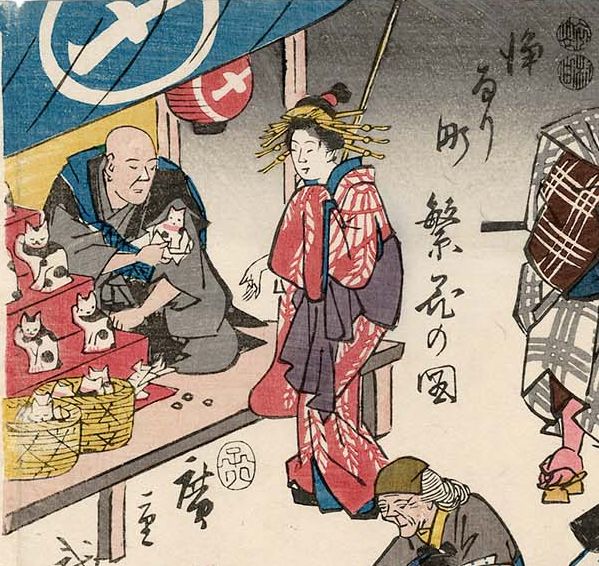
How the cats were made into figures came from the story of an old woman who was so poor that she had to sell her beloved cat. After selling it, the cat visited her in her dreams and told her to make its image in clay to sell and earn lots of money. She did and thus became very successful.




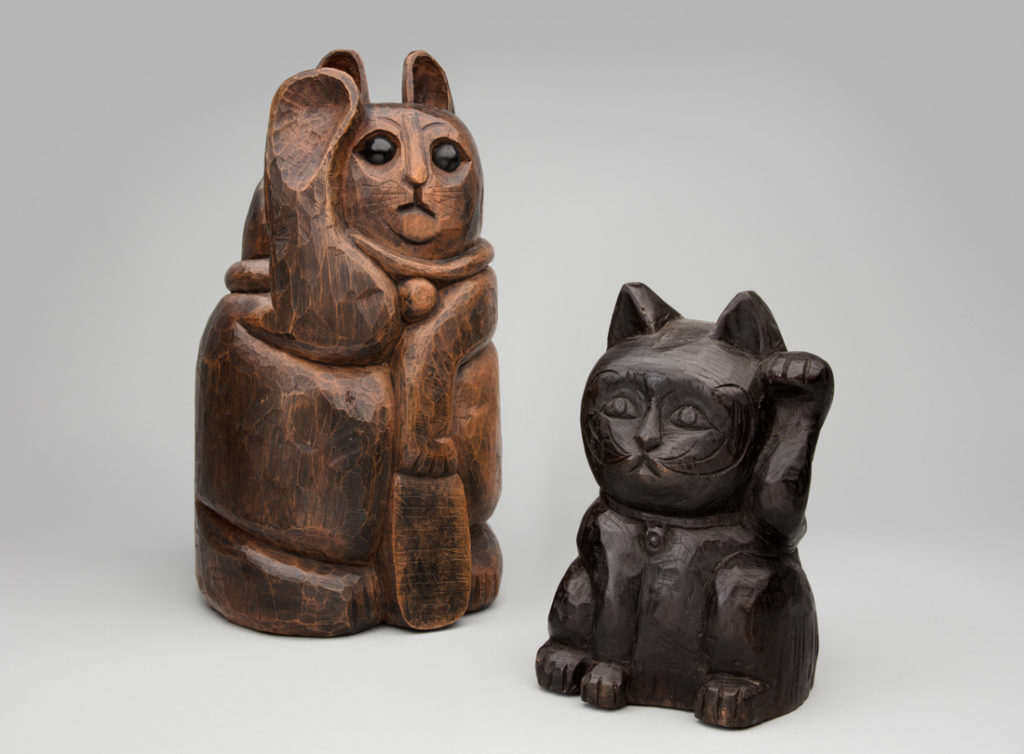



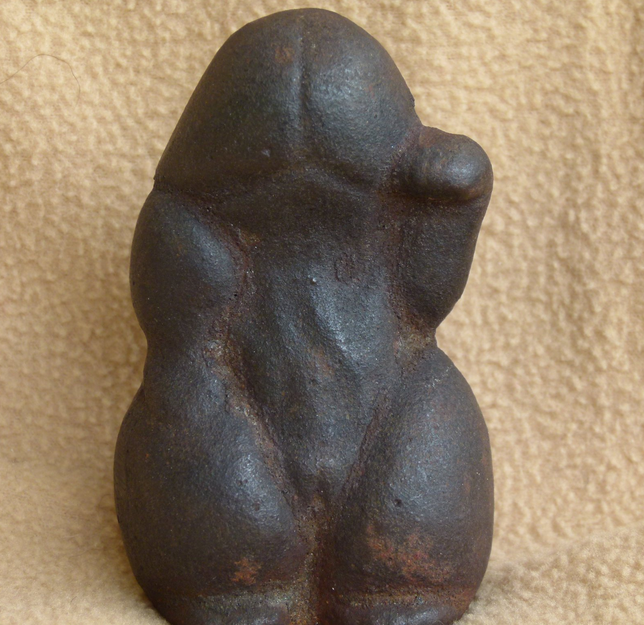




Western viewers mistakenly see the raised paw as a waving gesture, when in Japan, this is a movement of beckoning. A raised left paw ensures more customers for a business, while a right paw means more money and wealth. That is why during the Meiji (1868–1912) and early Taisho (1912–26) periods, shops would depict cats on their signs to lure customers inside.
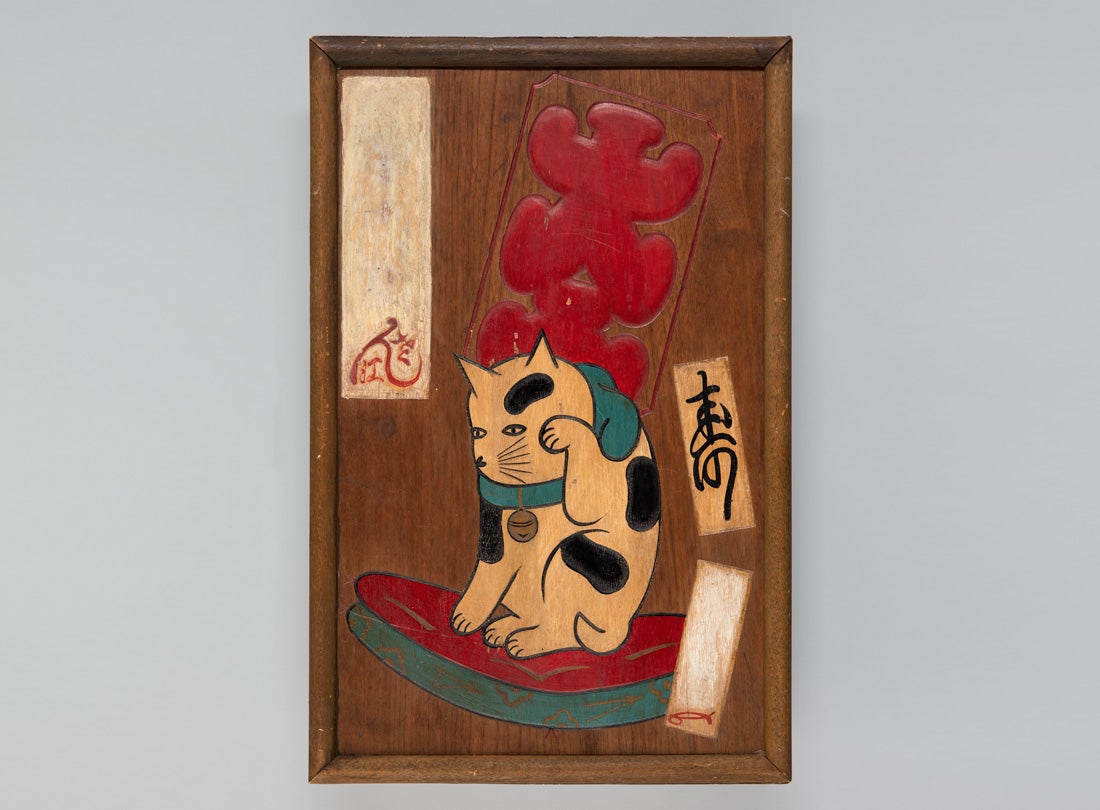
The Gotokuji Temple in Tokyo claims to be one of the original legends of the Maneki Neko. One story tells of a poor monk who could scarcely afford to maintain the original temple. Hence, his beloved cat beckoned traveling samurai from a rainstorm, to seek shelter and lodgings, and to learn the teachings of the monk. The samurai were so impressed that they donated goods and funds to the monk. Another tale has the lucky cat saving a feudal lord from a thunderstorm. The lord then built the temple as an act of gratitude. To this day, tourists and guests visit the temple by the thousands, leaving behind Maneki Neko to grant their wishes.
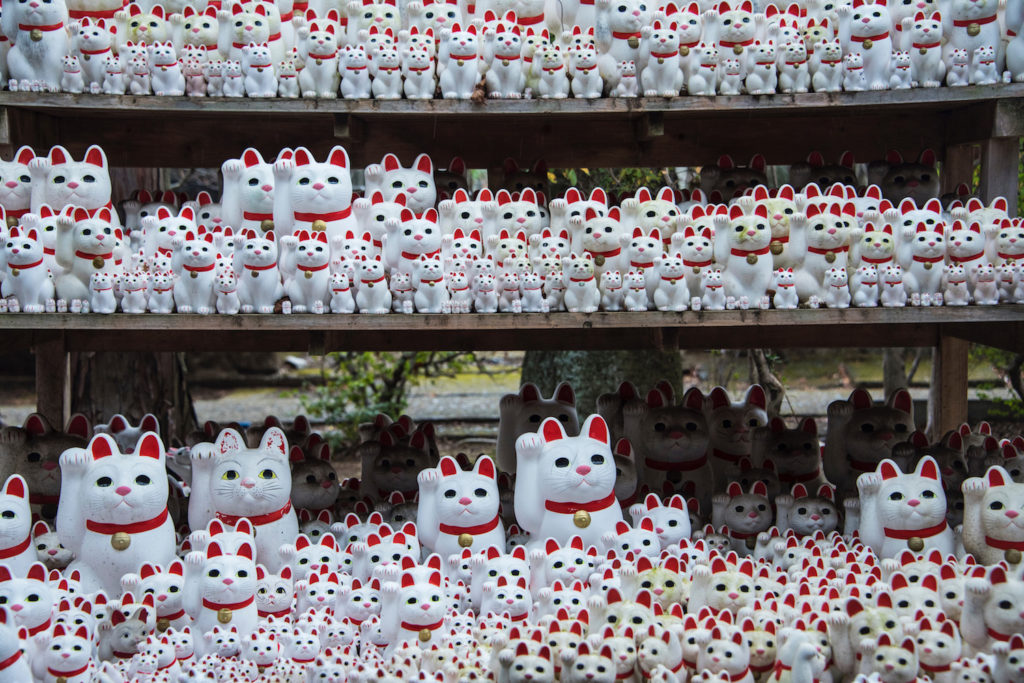
And if you are visiting Tokoname, fear not, dear traveler, as you will be protected by a huge two-dimensional Maneki Neko, which overlook the aptly named Manekineko-dori Street. The city is well known for its ceramic art, and further down the street, you will see a lot of ceramic cats wishing you good luck on your journey.

Maneki Neko’s colorful history just makes them more charming and endearing. These days you can find Lucky Cats in all shapes, sizes, and forms. There are keychains, calendars, bands, air fresheners, pots – pretty much anything. Nevertheless, these cute kittens carry a long history of traditions passed from generation to generation. In this last picture, you can see an astonishing project called Local Fortune Cat by Kakinuma dolls. The project shows 19 beckoning cats, each made from unique fabrics specific to different Japanese regions. The project tells a story of Japanese craftsmanship, art, and symbolism through the worldwide known Lucky Cats.
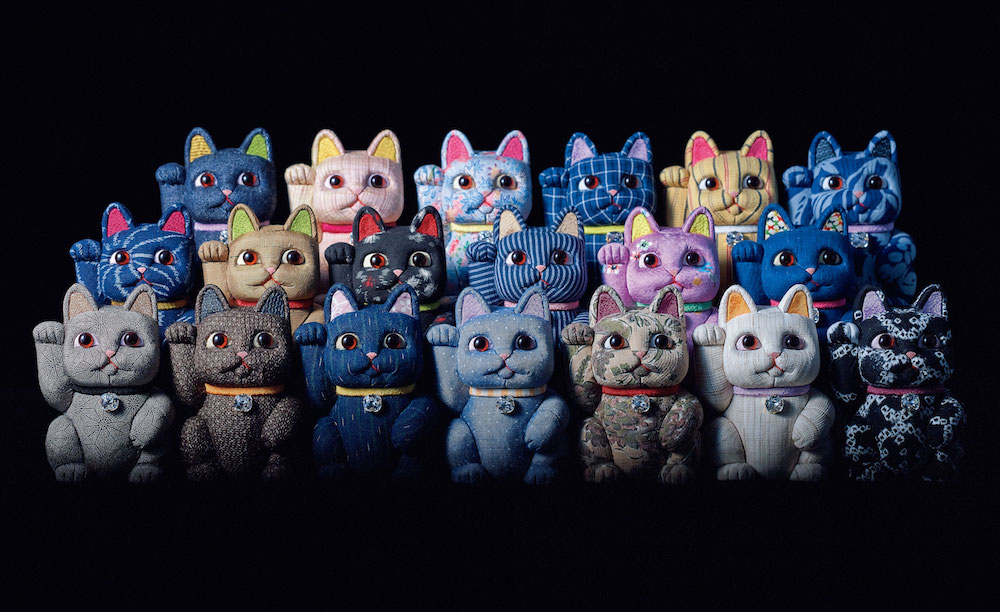
DailyArt Magazine needs your support. Every contribution, however big or small, is very valuable for our future. Thanks to it, we will be able to sustain and grow the Magazine. Thank you for your help!